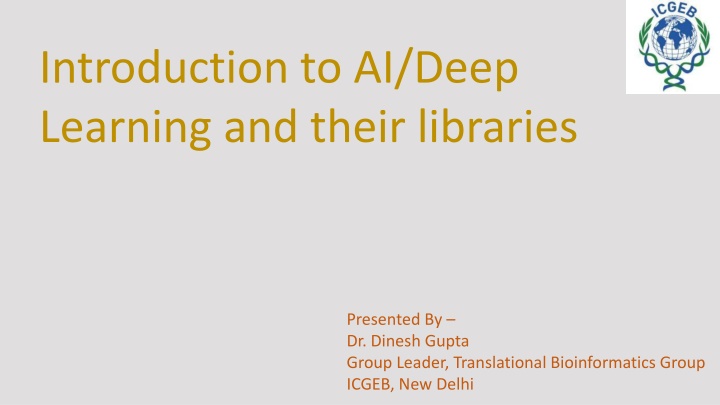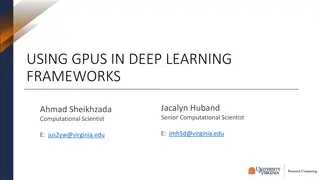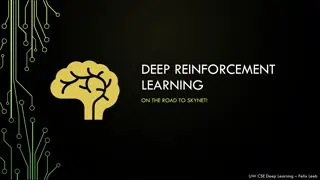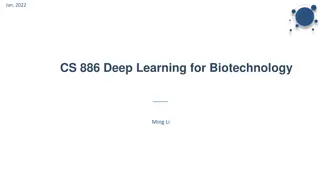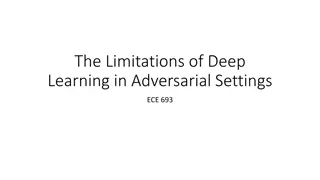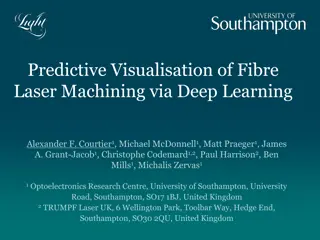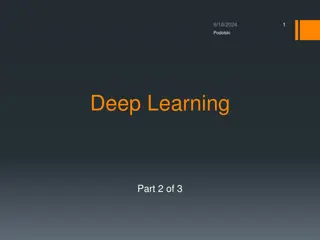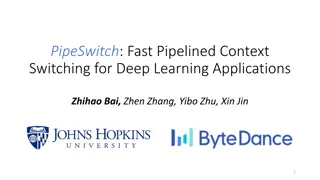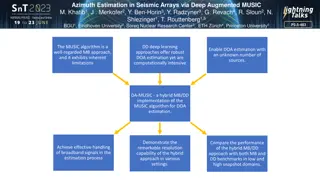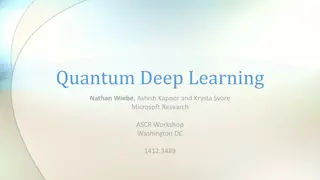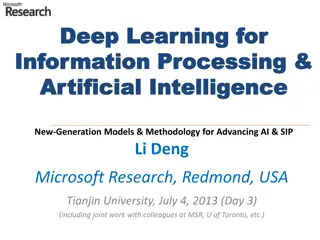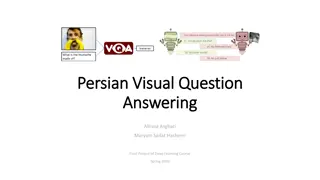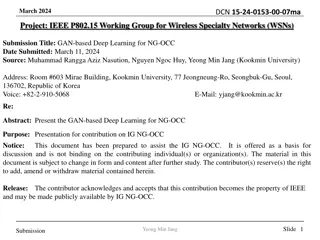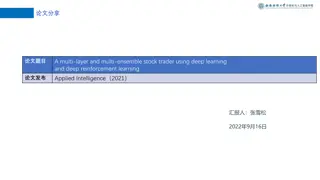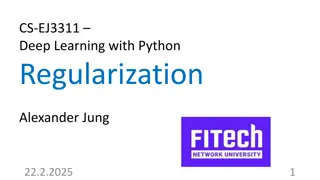Introduction to Deep Learning: Concepts & Applications
Deep learning, a subset of AI and machine learning, uses artificial neural networks to solve complex problems through data-driven learning. This involves multi-layer neural networks and intricate training processes to enhance performance. Neural networks perform non-linear transformations for advanced data processing and decision-making capabilities.
Download Presentation

Please find below an Image/Link to download the presentation.
The content on the website is provided AS IS for your information and personal use only. It may not be sold, licensed, or shared on other websites without obtaining consent from the author.If you encounter any issues during the download, it is possible that the publisher has removed the file from their server.
You are allowed to download the files provided on this website for personal or commercial use, subject to the condition that they are used lawfully. All files are the property of their respective owners.
The content on the website is provided AS IS for your information and personal use only. It may not be sold, licensed, or shared on other websites without obtaining consent from the author.
E N D
Presentation Transcript
Introduction to AI/Deep Learning and their libraries Presented By Dr. Dinesh Gupta Group Leader, Translational Bioinformatics Group ICGEB, New Delhi
What is deep learning? The field of artificial intelligence is essentially when machines can do tasks that typically require human intelligence. It encompasses machine learning, where machines can learn by experience and acquire skills without human involvement. Deep learning is a subset of machine learning where artificial neural networks, algorithms inspired by the human brain, learn from large amount of data. Deep learning allows machines to solve complex problems even when using a data set that is very diverse, unstructured and inter-connected. The more deep learning algorithm learn, the better the perform.
Definition of Artificial Neural Networks: Artificial neural networks are multi-layer fully connected neural nets and consists of an input layer, multiple hidden layers, and an output layer. Every node in one layer is connected to every other node in next layer and the network becomes deeper by increasing the number of hidden layers.
Output layer Input layer Hidden layer 2 Hidden layer 1
x1 w1 x2 w 2 z f w3 y1 x3 w4 xn Forward pass
Training : Primarily, randomly initialize the weights for all the nodes. For every training example, perform a forward pass using the current weights, and calculate the output of each node going from left to right. The final output is the value of the last node. Compare the final output with the actual target in the training data, and measure the error using a loss function. Perform a backward pass from right to left and propagate the error to every individual node using backpropagation. Calculate each weight s contribution to the error, and adjust the weights accordingly using gradient descent. Propagate the error gradients back starting from the last layer.
Why do we need to go deep in the first place? Layer of ANN performs non-linear transformation of its input from one vector space to another. For example, in some classification problems the input data in its given form is not separable. And by performing non-linear transformations at each layer, we project the input to a new vector space, and draw a complex decision boundary to separate the classes.
F(x.W) Non-linear transformation Input space Projected Space
A few concrete examples : Classification: Detect faces, identify peoples in images, recognized facial expressions (angry, joyful) Identify objects in images (stop signs, pedestrians, lane markers ) Recognise gestures in video Detect voices, identify speakers, transcribe speech to text, recognize sentiment in voices Classify text as spam (in emails), or fraudulent (in insurance claims), recognize sentiment in text
Clustering : Search: Comparison documents, images or sounds to surface similar items Anomaly detection: The flipside of detecting similarities is detecting anomalies, or unusual behavior. In many cases, unusual behavior correlates highly with things you want to detect and prevent, such as fraud.
Predictive analytics: Regressions Health breakdowns (strokes, heart attacks based on vital stats and data from wearables) Customer churn (predicting the likelihood that a customer will leave, based on web activity and metadata) Deep learning is able to establish correlations between present events and future events.
Few examples of deep learning applications in biology: Mannino and Coworkers (2018) developed a smartphone app for non-invasive detection of anemia using patient sourced photos of nails.
Yaron Gurovih and coworkers (2018) developed a facial image analysis framework DeepGestalt, using computer vision and deep learning algorithms, that qualnitifies similarities to hundreds of syndromes.
Various publicly available deep learning software Caffe PyTorch Tensorflow
Introduction to tensorflow: Currently, the most famous deep learning library in the world is TensorFlow which is developed by Google s Brain Team. It is called Tensorflow because it takes input as a multi-dimensional array, also known as tensors. Its architecture works in three parts: Preprocessing the data Build the model Train and estimate the model
There are numerous components that go into making TensorFlow. The two standout ones are: TensorBoard: Helps in effective data visualization using data flow graphs TensorFlow: Useful for rapid deployment of new algorithms/experiments The flexible architecture of TensorFlow enables us to deploy our deep learning models on one or more CPUs (as well as GPUs). Below are a few popular use cases of TensorFlow: Text-based applications: Language detection, text summarization Image recognition: Image captioning, face recognition, object detection Sound recognition Time series analysis Video analysis
Practical: The tf.layers module of Tensorflow provides a high-level API that makes it easy to construct a neural network. It provides methods that facilitate the creation of dense (fully connected) layers and convolutional layers, adding activation functions, and applying dropout regularization. We will use layers to build a convolutional neural network model to recognize the handwritten digits in the MNIST data set. The MNIST dataset comprises 60,000 training examples and 10,000 test examples of the handwritten digits 0 9, formatted as 28x28-pixel monochrome images.
Introduction to Convolution Neural Networks : Convolutional neural networks (CNNs) are the current state-of-the-art model architecture for image classification tasks. CNNs apply a series of filters to the raw pixel data of an image to extract and learn higher-level features, which the model can then use for classification. CNNs generally have four steps: Convolution Pooling Flattening Full connection
MNIST Dataset Output (Labelled images) FOUR Methodology for image classification using CNNs
